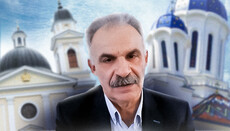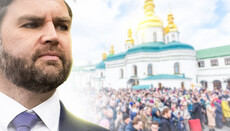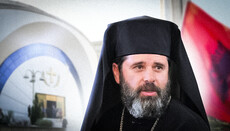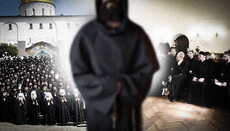“Orthodox Unity of Ukraine”: provocation, hype or nonsense?

“Orthodox Unity of Ukraine” organization was created in Ukraine, which aims at uniting the UOC with the OCU. We will figure out who belongs there and why it was created.
In Ukraine, there is a determination to unite the Ukrainian Orthodox Church (UOC) and the Orthodox Church of Ukraine (OCU). On June 11, 2020, the media reported that “Orthodox Unity of Ukraine” social movement was created in Kiev, which is aimed to “develop acceptable forms of association for both Churches” – the UOC and the OCU. The movement is an offspring of the "Spiritual-Religious Prospect of Ukraine" Public Organization. Let's take a close look at what kind of initiative it is, what it can lead to, and what its emergence is about.
First, we will find out what kind of public organization “Spiritual-Religious Prospect of Ukraine” is and who is behind it. The open platform of "Opendatabot" public data gives an answer.
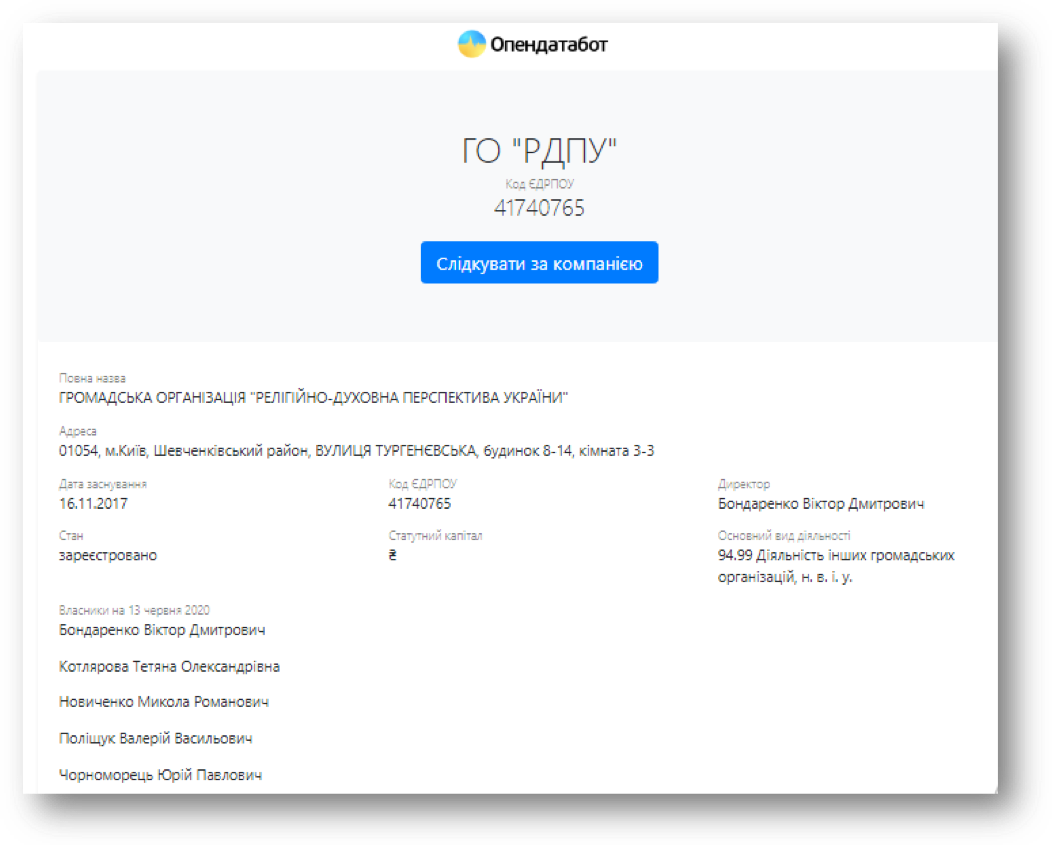
This organization was created in November 2017. Recall what those times were. The government actively promoted anti-church bills and was actively preparing to launch a “Ukrainian autocephaly” project. The project was calibrated to the presidential election of 2019. For its implementation, active negotiations were conducted with Phanar, and the then President P. Poroshenko prepared “vox populi” to unite all Orthodox faiths and receive the Tomos. It was then when, speaking with the annual message to the Verkhovna Rada, he announced a firm intention of the authorities to create a “Single Local Church” and get the Tomos: “Let the leadership of the Ecumenical Patriarchate also hear us. I want to once again draw the attention of His Holiness to our firm commitment in this respect, to the strong political will the Ukrainian leadership’s to solve this problem, which, unfortunately, has been on the agenda since 1991."
Therefore, it becomes clear that “Spiritual and Religious Prospect of Ukraine” was created specifically for the “unified autocephalous” project (the name of the OCU or the “holy church of Ukraine” had not appeared yet). This version is also supported by the composition of the founders, most of which are liberal religious scholars, and the director, Viktor Bondarenko, a former employee of the Institute of Scientific Atheism of the Academy of Social Sciences under the Central Committee of the Communist Party, as well as a former chairman of the State Committee for Religious Affairs of Ukraine.
Therefore, it becomes clear that “Spiritual and Religious Prospect of Ukraine” was created specifically for the “unified autocephalous” project (the name of the OCU or the “holy church of Ukraine” had not appeared yet).
However, over the past three years, the Public Organization "Spiritual-Religious Prospect of Ukraine" has not shown itself in any way. This is explained by the fact that the authorities used much more serious and effective resources: the Security Service of Ukraine, the Prosecutor’s Office and groups of national radicals to create a “single local church”. As we know, the use of these tools did not produce the desired result. Moreover, the election project “Tomos”, which was supposed to bring P. Poroshenko to a second presidential term, actually led him to the crushing defeat in the elections. A new team came to power, which so far has not actively employed the special services and law enforcement agencies in the religious sphere. Therefore, the time has come to launch the "Spiritual-Religious Prospect of Ukraine".
And so it made a big statement on June 11, 2020, creating the “Orthodox Unity of Ukraine” movement, whose coordinating council included politicians, religious figures, scientists and journalists. There is no list with specific personalities so far, but there can be no doubt that these are going to be various religious scholars and public figures that are not in favor of the UOC, to put it softly. The movement has already adopted the “Memorandum on the Restoration of Orthodox Unity in Ukraine”, getting familiar to which immediately allows us to reject the assumption that this whole idea really was generated in order to try to unite the Ukrainian Orthodox faiths. Let's see why.
Firstly, we can see a completely incorrect assessment of the situation. The Memorandum says, "The true sentiment in the Orthodox ecclesiastic environment of Ukraine indicates that among believers, the priesthood and the episcopate of both Churches, the desire for unification dominates ..." In fact, this is not even mentioned. Instead, we have the following:
Spiritual interests reign supreme in the UOC, among Her hierarchy, priesthood and faithful. The UOC recognizes Herself as the Church of Christ, the saving Ark, in which salvation from the waves of the sea of life and the attainment of the Kingdom of Heaven are only possible. Staying outside this Ark means the danger of eternal perdition. Not wishing such a prospect to anyone, including supporters of the OCU, the UOC hierarchs and, above all, Her Primate His Beatitude Metropolitan Onuphry constantly call for repentance and the return to the Church of Christ of all those who have fallen from Her.
Again, reunification with the Church is primarily of spiritual significance, and only then socio-political. Therefore, overriding with the UOC is not “the desire for unification” but the desire to return the lost to the path of salvation. In addition, while at the time the “SLC” project was still being developed, religious scholars said that about a third of the UOC episcopate favorably viewed the prospects of unification with the UOC-KP, today, after a brutal series of seizures of temples, arson, violence, and unprecedented pressure from state power bodies, after the OCU has discredited itself by internal strife and blatant canonical ignorance, there is not a single UOC bishop who might want this unification.
The UOC recognizes Herself as the Church of Christ, the saving Ark, in which salvation from the waves of the sea of life and the attainment of the Kingdom of Heaven are only possible. Staying outside this Ark means the danger of eternal perdition. Not wishing such a prospect to anyone, including supporters of the OCU, the UOC hierarchs and, above all, Her Primate His Beatitude Metropolitan Onuphry constantly call for repentance and the return to the Church of Christ of all those who have fallen from Her.
Hardly anyone from the UOC today is eager to unite with those who cut down locks from churches and expel priests from their homes along with their young children. In any case, those who really wanted to unite came on December 15, 2018 to the so-called “Unification Council” and united. There were only two such hierarchs: the former Metropolitan Alexander (Drabinko), implicated in a variety of scandals, and the friend to P. Poroshenko, former Metropolitan Simeon (Shostatsky), who had cherished to lead the new church structure.
As for the OCU, its "hierarchs" also do not want unification, because in this case, the hierarchs of the UOC will prevail both quantitatively and qualitatively given the corresponding theological and moral level of the “episcopate” of the Orthodox Church of Ukraine. Therefore, Epiphany Dumenko and his colleagues can only wish they could subordinate the UOC to the OCU, rather than have a full union.
Secondly, the “Spiritual and Religious Prospect of Ukraine” has a completely incorrect vision of what the Church is. For the creators of this organization, this is a socio-political institution, which serves to achieve state, public and other interests but not religious ones. Here are a few quotes from the Memorandum...:
- “The Orthodox Church in the Ukrainian lands, throughout its more than a thousand-year history, has served its people ...”
- "The political awakenings of Ukrainians have always been accompanied by a surge in the search for independence of Orthodox Ukrainians, while the Ukrainian state supported its Church during these periods."
- "Disputes and misunderstandings between the two Ukrainian Churches do not contribute to the strengthening of Orthodoxy in our lands and the strengthening of Ukraine as a state."
Thirdly, we can see a completely erroneous positioning of the OCU as recognized in the Orthodox World and therefore equal to the UOC in the canonical sense. Quotes:
- “... by the will of God, the Orthodox Church of Ukraine emerged as the fifteenth Church as part of a single Ecumenical Orthodox Church. Next to her in Ukraine continues to operate the Ukrainian Orthodox Church ... "
- "... The Ukrainian Orthodox Church of the Kyiv Patriarchate and the Ukrainian Autocephalous Orthodox Church, which renewed their eucharistic communion with World Orthodoxy."
- "... within the framework of one state and one Orthodox nation, two canonically legitimate Orthodox Churches appeared – the OCU and the UOC."
All this is very far from reality. The return from schism takes place only through repentance and never through a document published by fanariotic hierarchs. From the canonical point of view, such a “reunification” is negligible. Only three Local Churches entered into communion with the OCU. But by doing this they did not raise the OCU to their canonical level – they themselves fell to the level of the schismatic OCU. Regarding the UOC-KP and the UAOC, they could not “restore” unity with World Orthodoxy, since they, as organizations, had never been in such unity. It can only be said about individuals who actually used to be in the canonical Church.
Fourthly, since the “Orthodox Unity of Ukraine” movement consists exclusively of sympathizers of the OCU (an unambiguous conclusion can be drawn from the text of the Memorandum itself), it will not work for a real association but at best – for hot air. Nor will it develop “... the forms of unification acceptable for both Churches and search for options for real cooperation ...”, but proposals that are obviously untenable to the UOC.
Since the “Orthodox Unity of Ukraine” movement consists exclusively of sympathizers of the OCU (an unambiguous conclusion can be drawn from the text of the Memorandum itself), it will not work for a real association but at best – for hot air.
Why then was this movement “Orthodox Unity of Ukraine” created? We make exclusively subjective assumptions:
- In order to create for the OCU an image of an organization that seeks to unite, opens its arms to embrace anyone enthusiastic, and thus acts from a peacekeeping standpoint;
- In order to offset the negative effect of the recent arsons of Orthodox monasteries and unprecedented cruelty of the forceful seizure of the church in Zadubrivka by proponents of the OCU;
- Since public organizations exist, as a rule, on someone’s grants, this movement can be just a good reason to attract funds. Often, employees of such organizations act according to the logic “what should we come up with to get financing?” And it doesn’t matter how unfeasible the proposed project will be.
The emergence of the “Orthodox Unity of Ukraine” movement indicates that the OCU found itself in rather an unenviable situation: political support is far from being as much powerful as it was under Petro Poroshenko, the issue with international recognition has stalled, Patriarch Bartholomew does not even congratulate Epiphany on his St. Patron’s day, “wedge-driving” with Filaret Denisenko continues, and Greek Catholics are looming on the horizon.
Indeed, it’s time to look for “acceptable forms of association” with the UOC, even in such a clumsy wording.
But for some reason, the real option is not considered there: repentance and return to the fold of the Church.
